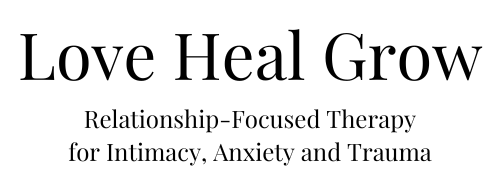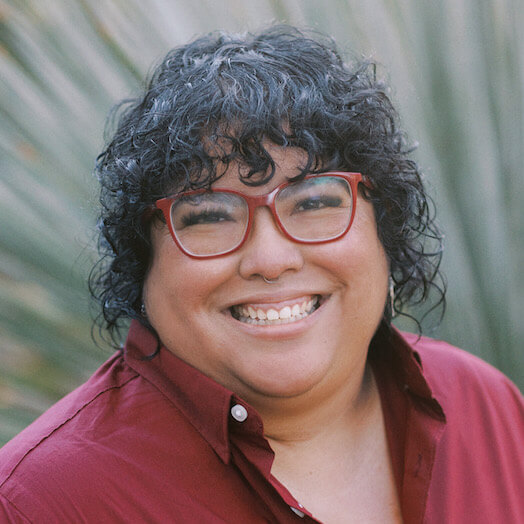
If you’re a member of the LGBTQIA+ community, it’s likely that you’ve thought about therapy at least once or twice. Surveys show that queer American adults and youth both show elevated levels of depression and anxiety– which makes a lot of sense, given how hostile the political landscape can be for this community. Equally alarming is the rate at which LGBTQIA+ folks can’t get therapy; while 67% of LGBTQIA+ people reported needing mental health services over the past two years, only about half of them were able to get the help they needed. There are many reasons for this, including wait times and the cost of therapy. Another reason is the fear of predatory conversion therapy.
Today, we’re going to talk about conversion therapy and explain why it doesn’t help– and we’ll also teach you how to spot it, since it often hides under other names. This is a heavy topic, especially for people who have been through this type of mental health abuse, and we will be discussing a number of triggering topics, including self-harm, suicide, and physical and mental harm. Please keep that in mind before going any further with this article!
What Is Conversion Therapy?
Conversion therapy, also known as reparative therapy, sexual orientation change efforts (SOCE), and gender identity change efforts (GICE), is a widely discredited and harmful practice aimed at changing a person’s sexual orientation or gender identity. This controversial approach is based on the false belief that being LGBTQIA+ is abnormal or undesirable. Conversion therapy methods vary but often include psychological or religious interventions, such as counseling, prayer, or aversion techniques.
The vast majority of conversion therapy is not practiced by mental health professionals; according to a survey done by the UCLA Williams School of Law, 81% of conversion therapy patients received it from a religious leader, not a healthcare professional. These practices have been condemned by major medical and mental health organizations worldwide due to their ineffectiveness, potential for psychological harm, and violation of human rights. In fact, many states are outright banning it; 22 states and Washington, D.C. have banned conversion therapy for minors, and 5 additional states have partial bans.
The most important thing to know is that whether a person is forced into it by family members, coerced into it, or enter it willingly, conversion therapy does not help. In fact, it’s actively harmful. People who have undergone conversion therapy are 88% more likely to attempt suicide. If you have a LGBTQIA+ child, conversion therapy is one of the worst things you can do to them. Even if you personally don’t support the LGBTQIA+ community, conversion therapy won’t “fix” your child. It’s more likely to cause them severe emotional harm.
What Are The Impacts of Conversion Therapy?
Conversion therapy has numerous negative impacts, including:
Psychological Harm
Conversion therapy often leads to significant psychological distress, including anxiety, depression, shame, guilt, and low self-esteem. The pressure to change one’s sexual orientation or gender identity can cause profound internal conflict and identity confusion. Many individuals who undergo conversion therapy experience trauma as a result of the coercive and often abusive tactics used by therapists or religious leaders. This trauma can manifest in symptoms such as post-traumatic stress disorder (PTSD), flashbacks, and nightmares.
Physical Health Risks
Some forms of conversion therapy involve harmful practices such as aversion therapy, which may include electric shocks or nausea-inducing substances. These methods can lead to physical harm, including burns, nausea, vomiting, and other adverse reactions. Adidtionally, research has shown a strong correlation between conversion therapy and increased risk of suicidal ideation and suicide attempts among LGBTQIA+ individuals. The rejection, shame, and psychological distress inflicted by conversion therapy can exacerbate existing mental health challenges and contribute to suicidal thoughts and behaviors.
Isolation and Alienation
LGBTQIA+ people who undergo conversion therapy may feel isolated and alienated from their communities, including family, friends, and religious institutions. This isolation can exacerbate feelings of loneliness and contribute to a sense of rejection and stigma. Conversion therapy undermines individuals’ authentic identity development by promoting shame and self-rejection based on their sexual orientation or gender identity. This interference can impede healthy self-expression, self-acceptance, and personal growth.
How Do I Spot Conversion Therapy?
So how can you tell whether a therapy practice is legitimate or harmful? It’s very important to be able to distinguish between real therapy practices and conversion therapy to ensure that you’re getting actual mental health support. Here are some indicators to help you tell whether a practice is legitimate, or whether it’s conversion therapy in disguise:
- Professional Credentials: Verify the therapist’s credentials and qualifications. Legitimate therapists typically have degrees in psychology, counseling, social work, or related fields and are licensed or certified by relevant professional organizations or regulatory bodies. Remember, more than 80% of conversion therapy isn’t performed by therapists!
- Approach and Techniques: Inquire about the therapist’s approach and techniques used in therapy. Conversion therapy often involves efforts to change a person’s sexual orientation or gender identity, while legitimate therapy focuses on supporting individuals in exploring and understanding their identities without aiming to change them.
- Ethical Standards: Ask about the therapist’s adherence to professional ethical standards. Conversion therapy is widely regarded as unethical and has been denounced by major mental health organizations. Legitimate therapists follow ethical guidelines that prioritize the well-being and autonomy of their clients.
- Affirming Approach: Legitimate therapy typically adopts an affirming and supportive approach toward LGBTQIA+ individuals, respecting their identities and experiences. Conversely, conversion therapy may involve pathologizing LGBTQIA+ identities and promoting shame or guilt about one’s sexual orientation or gender identity.
- Referrals and Recommendations: Ask for referrals or recommendations from trusted sources, such as LGBTQIA+ advocacy organizations or community support groups. These sources can help connect you with therapists who provide affirming and effective therapy while avoiding conversion therapy practices.
- Awareness of Red Flags: Be aware of red flags that may indicate conversion therapy, such as promises of “curing” or “fixing” sexual orientation or gender identity, use of shaming or guilt-inducing language, insistence on secrecy or confidentiality, and avoidance of discussing the therapist’s credentials or approach in detail. There’s nothing to be “fixed” about an LGBTQIA+ identity, because there’s nothing broken or wrong with these identities!
Also, because people are becoming more familiar with the harms of conversion therapy, it often goes by other names, including:
- Sexual attraction fluidity exploration in therapy (SAFE-T)
- Eliminating, reducing, or decreasing frequency or intensity of unwanted same-sex attraction (SSA)
- Reparative therapy
- Sexual reorientation efforts
- Ex-gay ministry
- Promoting healthy sexuality
- Addressing sexual addictions and disorders
- Sexuality counseling
- Encouraging relational and sexual wholeness
- Healing sexual brokenness
While some of these terms are used in legitimate therapeutic practices, like “promoting healthy sexuality” and “addressing sexual addictions,” they should definitely be considered in context. A therapy practice that says they promote healthy sexuality and uses identity-affirming language and has strong ties to the local LGBTQIA+ community is likely to be helpful. But any practice that claims to be an ex-gay ministry is something to watch out for!
At Love Heal Grow, we know just how important supportive therapists are for the LGBTQIA+ community. After all, some of our therapists are under that umbrella themselves! We pride ourselves on offering compassionate, effective therapy that affirms your identity and orientation. Whether that’s queer relationship therapy or individual therapy, we’re here for everyone under the rainbow. Schedule with one of our therapists today for a therapy session that helps you celebrate what makes you unique.
























